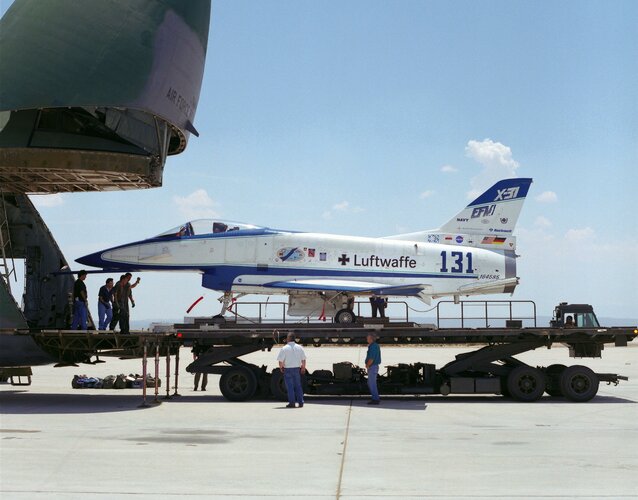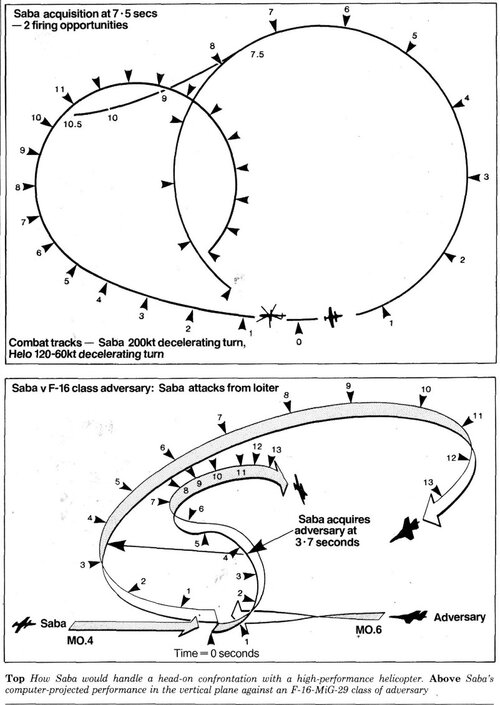YouCantbeCirrus
I am Cirrus, and don't call me Cessna
- Joined
- 13 July 2021
- Messages
- 17
- Reaction score
- 38
Hello everyone, I have been researching supermaneuverable aircraft recently and the Rockwell-Messerschmitt-Bölkow-Blohm X-31 (MBB X-31 from here) has always fascinated me as it was demonstrated to be the most maneuverable modern fighter aircraft for years and still might be the most maneuverable even to this day.
The aircraft resembles the Eurofighter Typhoon so much (which makes sense as MBB is part of the Eurofighter conglomerate to this day) that I had imagined an alternate universe where the Typhoon had run into technical problems and due to cost and better performance the X-31 was the plane put into production as the modern shared Air Superiority fighter of Europe.
So here’s a short story of what I think might’ve happened in a world where the west would have an aircraft fully equal or better that the SU-27 in supermaneuvrability.
Tell me what you think and if this was a likely chain of events in this alternate universe!
An Alternate Universe: The Derecho is Chosen
It is late 1988 and the program known as the British Aerospace EAP is in turmoil. The West German government is in a tight spot financially as is thinking of withdrawing from the collaborative project with the British to develop the next generation of air superiority fighter. With cost being put more on the burden of the government of Germany many of the politicians are wanting to withdraw from the project entirely.
Due to the pressure from the German procurement office the BWB, alternate ways of funding the project where sought out. The idea of expanding the partners in the program was the main way the current countries believed would help with funding. As such, several other major Western countries where approached for a stake in the now establish Future European Fighter Program (FEFP) conglomerate. With a major need for new fighters to replace their SAAB Drakens and the interim Viggens in service, Sweden agreed to a 20% stake in funding of the project for an agreed 50 aircraft with a possibility of more. Due to them now having a larger stake in the conglomeration, they pushed for the adoption of the aircraft also in development by MBB, which would become the Rockwell-MBB X-31, due to its use of the well-known GE F404 then in licensed production there by Volvo Aero.
The X-31 was being jointly developed by Rockwell International and MBB and the first prototype was to fly the next year in 1989. Even early aerodynamic testing of smaller models such as the earlier Rockwell SNAKE had shown the maneuverability of the aircraft and Sweden where anxious to have another aircraft that was supermaneuverable to replace the Draken.
Due to this and then push from other governments the EAP fighter was abandoned and the X-31, now known as the FF-89 (Future Fighter of 1989) was pushed into the main development stage. With its first flight on July 8th, 1989 the proceeding test flights showed the aircraft was not only supermaneuverable but could possibly be the most maneuverable aircraft in the west.
Throughout 1990 into 1991, several iterations of the FF-89 allowed the aircraft to mature, and the off-the-shelf parts of the X-31's original design allowed development to proceed very quickly. The main snag was the control software for the plane allowing it to fly without its vertical tail in the event of a hit by enemy fire, and it was shown that with its advanced thrust vectoring the FF-89 could indeed fly without the vertical tail altogether; although it was kept for ease of flight training.
On November 14th, 1991 the project was accepted in production by the newly reunified Germany, the UK, Sweden, Spain and Italy as the Unifighter Derecho.
Production began the next year, with the first delivery going to the German fighter wing Taktisches Luftwaffengeschwader 71 "Richthofen" on September 27th.
The aircraft resembles the Eurofighter Typhoon so much (which makes sense as MBB is part of the Eurofighter conglomerate to this day) that I had imagined an alternate universe where the Typhoon had run into technical problems and due to cost and better performance the X-31 was the plane put into production as the modern shared Air Superiority fighter of Europe.
So here’s a short story of what I think might’ve happened in a world where the west would have an aircraft fully equal or better that the SU-27 in supermaneuvrability.
Tell me what you think and if this was a likely chain of events in this alternate universe!
An Alternate Universe: The Derecho is Chosen
It is late 1988 and the program known as the British Aerospace EAP is in turmoil. The West German government is in a tight spot financially as is thinking of withdrawing from the collaborative project with the British to develop the next generation of air superiority fighter. With cost being put more on the burden of the government of Germany many of the politicians are wanting to withdraw from the project entirely.
Due to the pressure from the German procurement office the BWB, alternate ways of funding the project where sought out. The idea of expanding the partners in the program was the main way the current countries believed would help with funding. As such, several other major Western countries where approached for a stake in the now establish Future European Fighter Program (FEFP) conglomerate. With a major need for new fighters to replace their SAAB Drakens and the interim Viggens in service, Sweden agreed to a 20% stake in funding of the project for an agreed 50 aircraft with a possibility of more. Due to them now having a larger stake in the conglomeration, they pushed for the adoption of the aircraft also in development by MBB, which would become the Rockwell-MBB X-31, due to its use of the well-known GE F404 then in licensed production there by Volvo Aero.
The X-31 was being jointly developed by Rockwell International and MBB and the first prototype was to fly the next year in 1989. Even early aerodynamic testing of smaller models such as the earlier Rockwell SNAKE had shown the maneuverability of the aircraft and Sweden where anxious to have another aircraft that was supermaneuverable to replace the Draken.
Due to this and then push from other governments the EAP fighter was abandoned and the X-31, now known as the FF-89 (Future Fighter of 1989) was pushed into the main development stage. With its first flight on July 8th, 1989 the proceeding test flights showed the aircraft was not only supermaneuverable but could possibly be the most maneuverable aircraft in the west.
Throughout 1990 into 1991, several iterations of the FF-89 allowed the aircraft to mature, and the off-the-shelf parts of the X-31's original design allowed development to proceed very quickly. The main snag was the control software for the plane allowing it to fly without its vertical tail in the event of a hit by enemy fire, and it was shown that with its advanced thrust vectoring the FF-89 could indeed fly without the vertical tail altogether; although it was kept for ease of flight training.
On November 14th, 1991 the project was accepted in production by the newly reunified Germany, the UK, Sweden, Spain and Italy as the Unifighter Derecho.
Production began the next year, with the first delivery going to the German fighter wing Taktisches Luftwaffengeschwader 71 "Richthofen" on September 27th.



